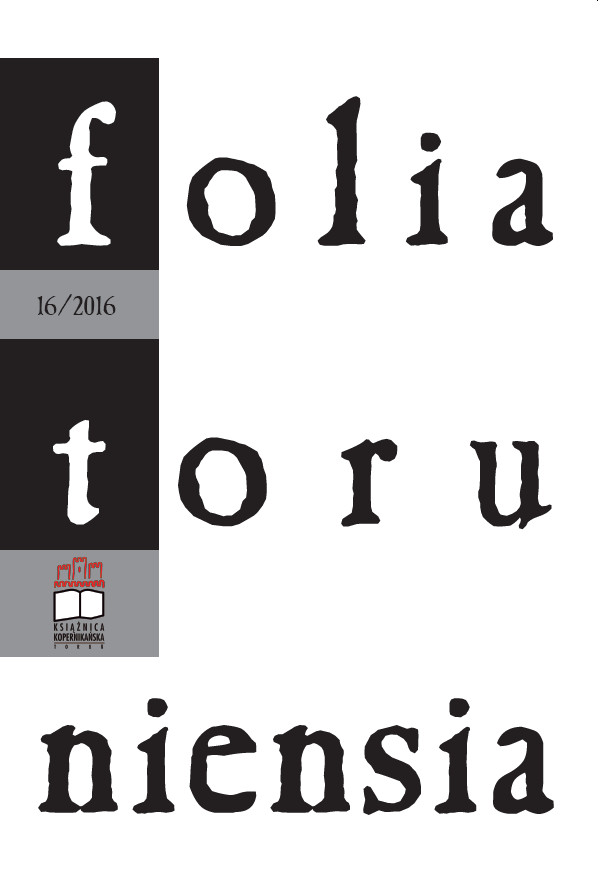Verfügbarkeit der Websites am Beispiel des Startpakets JBiblioteka
DOI:
https://doi.org/10.12775/FT.2016.005Schlagworte
Zugänglichkeit, accessibility, Joomla!, CMS, WCAG 2.0, öffentliche BibliothekenAbstract
JBiblioteka stellt ein innovatives (auf Open Source CMS Joomla! gestütztes) Startpaket für öffentliche Bibliotheken dar, das stark auf die Zugänglichkeit der Internetseiten (accessibility) fokussiert ist. Mit Hilfe des Startpakets können die Bibliotheken ein fertiges Internetportal freischalten, das dem Standard WCAG 2.0 (Web Content Accessibility Guidelines) sowie dem Nützlichkeitsstandard (usability) der Websites entspricht. Dies ist sehr wichtig vor allem hinsichtlich der Verordnung des Ministerrates vom 12. April 2012 über die Landesrahmen der Interoperabilität, die minimalen Voraussetzungen für teleinformatische Systeme (Gesetzblatt 2012, Nummer 526). Diese Verordnung verpflichtet Subjekte, die öffentliche Aufgaben umsetzen, dazu, die Websites an den in den meisten europäischen Ländern anerkannten Standard WCAG 2.0 anzupassen.
Im vorliegenden Beitrag wurden die Ergebnisse der durch Experten durchgeführten Analyse der Funktionalität des Pakets JBiblioteka und dessen Zugänglichkeit erleutert. Das Hauptziel des Beitrags ist, neue Lösungen in Bezug auf die Anpassung der Websites an die Bedürfnisse von behinderten Personen darzustellen und die bibliothekarischen Kreise mit innovativen Lösungen im Bereich der Qualitätserhöhung der Bibliothekswebsites bekannt zu machen.
Literaturhinweise
„Konwencja o Prawach Osób Niepełnosprawnych, Rzecznik Praw Obywatelskich”. dostęp 20.04.2016. https://www.rpo.gov.pl/pl/konwencja-o-prawach-osob-niepelnosprawnych.
„Rozporządzenie Rady Ministrów z dnia 12 kwietnia 2012 r. w sprawie Krajowych Ram Interoperacyjności, minimalnych wymagań dla rejestrów publicznych i wymiany informacji w postaci elektronicznej oraz minimalnych wymagań dla systemów teleinformatycznych”. Dz. U. 2012 poz. 526.
“World Laws – Introduction to Laws Throughout the World”, W WebAIM (Web Accessibility In Mind). dostęp 20.04.2016. http://webaim.org/articles/laws/world/.
„Wytyczne dla dostępności treści internetowych 2.0 (WCAG 2.0)”. Fundacja Instytut Rozwoju Regionalnego. dostęp 20.04.2016. http://www.fdc.org.pl/wcag2/index.html.
Bednarczyk, Dorota. 2012. „Podstawowe reguły dostępności serwisów internetowych dla niepełnosprawnych użytkowników”. Biuletyn EBIB 132. dostęp 20.04.2016. http://open.ebib.pl/ojs/index.php/ebib/article/view/190.
Black, Elizabeth L., 2011. “Selecting a Web Content Management System for an Academic Library Website”. Information Technology and Libraries 30(4): 185-189. dostęp 6.03.2016. Dostępny w World Wide Web: http://ejournals.bc.edu/ojs/index.php/ital/article/view/1869/1707.
Dajnowiec, Sebastian. 2016. „Na jakich warunkach udostępniane są startowe pakiety instalacyjne?” W Kuźnia dostępnych stron. dostęp 20.04.2016. http://dostepny.joomla.pl/warsztat/czeste-pytania/188-na-jakich-warunkach-udostepniane-sa-startowe-pakiety-instalacyjne.
Dunlap, Isaac H. 2006. “How Database-Driven Web Sites Enhance Accessibility”. Library Hi Tech News 23(8): 34-38.
Fedorowicz-Kruszewska, Małgorzata. Jarocki, Mariusz. 2010. „Dostępność stron WWW polskich bibliotek uniwersyteckich dla osób z niepełnosprawnością wzroku – wyniki badań”. Przegląd Biblioteczny, 4: 447-459.
Hegarty, Nora. Kane, David. 2007. “New Web Site, New Opportunities: Enforcing Standards Compliance within a Content Management System”. Library Hi Tech, 25(2): 276-287.
Kaczmarek, Artur. 2015. “Jak zbudować stronę zgodną z wytycznymi WCAG 2.0”. dostęp 20.04.2016. https://docs.google.com/presentation/d/1NzCvUTqem1dEYfrOMmSGSlcRy5ndNxLe-FHFAgFJoKc/edit#slide=id.gca2a6704b_0_60.
Pieszczek, Sławomir. 2014. „Jak utworzyć własny szablon dla Joomla! nie dotykając kodu? EF4 cz.2”. W slawop.NET Sławomir Pieszczek. dostęp 20.04.2016. http://www.slawop.net/blog/jak-utworzyc-wlasny-szablon-dla-joomla-nie-dotykajac-kodu-ef4-cz-2.
Rainville-Pitt, Sebastien. D’Amour, Jean-Marie. 2009. “Using a CMS to Create Fully Accessible Web Sites”. Journal of Access Services. 6 (1-2): 261-264.
Schmetzke, Axel. Comeaux, Dave. 2013. “Accessibility of Academic Library Web Sites in North America: Current Status and Trends (2002-2012)”. Library Hi Tech, 31(1): 8-33.
Wajda, Stefan. 2015. „BIP dla Joomla!”. W Kuźnia dostępnych stron. dostęp 20.04.2016. http://dostepny.joomla.pl/warsztat/rozwiazania/123-bip-dla-joomla.
Wajda, Stefan. 2015. „Dostępne szablony”. W Kuźnia dostępnych stron. Dostęp 20.04.2016. http://dostepny.joomla.pl/o-projekcie/dzialania/16-dostepne-szablony.
Wajda, Stefan. 2015. „Magazyn – alternatywny układ przeglądu”. W Kuźnia dostępnych stron. Dostęp 20.04.2016. http://dostepny.joomla.pl/warsztat/rozwiazania/24-dostosowanie-szablonow/81-magazyn-alternatywny-uklad-przegladu.
Wajda, Stefan. 2015. „Pakiety Szybki start”. W: Kuźnia dostępnych stron. Dostęp 20.04 2016. http://dostepny.joomla.pl/o-projekcie/dzialania/17-pakiety-szybki-start.
Downloads
Veröffentlicht
Zitationsvorschlag
Ausgabe
Rubrik
Lizenz
Authors sign the license agreement, where authors have copyright but license exclusive rights in their article to the publisher. In this case authors have a range of rights, including:
- The right to share or reuse their article in the same ways permitted to third parties under the Creative Commons Attribution-NoDerivatives 4.0 (CC BY-ND 4.0) license. Following it, the author can "copy and redistribute the material in any medium or format for any purpose, even commercially. The licensor cannot revoke these freedoms as long as you follow the license terms."
- Authors retain patent, trademark and other intellectual property rights (including research data).
- Authors receive proper attribution and credit for the published work.
![]()
Stats
Number of views and downloads: 569
Number of citations: 0



